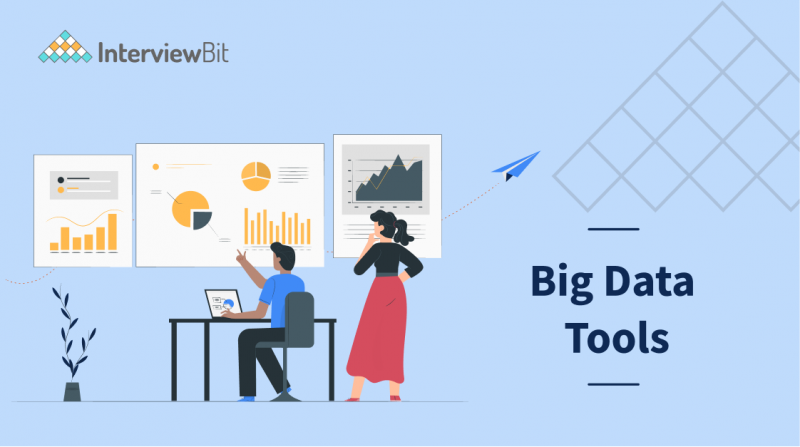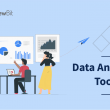We all use smartphones but have we ever wondered how much data it generates in the form of texts, phone calls, emails, images, videos, searches, and music? A large amount of data is generated every month by a single smartphone user. Imagine this number multiplied by 5 billion smartphone users. This is a lot for our mind to even process, isn’t it?
This amount of data is quite a lot for traditional commuting systems to handle and this massive amount of data is what we term big data. So now the question arises what do we do with this massive chunk of data and how? Any data is senseless until it shifts into valuable data and knowledge and to make sense of this huge chunk of data, big data tools and technologies come into the picture. Confused? Let us try and clear up your confusion in the below section.
- What is Big Data?
- Top Big Data Tools
- 1. Hadoop
- 2. HPCC
- 3. Storm
- 4. Cassandra
- 5. Qubole
- 6. Flink
- 7. CouchDB
- 8. StatWing
- 9. Xplenty
- 10. Cloudera
- 11. Hive
- 12. Rapidminer
- 13. OpenRefine
- 14. Tableau
- 15. MongoDB
- 17. Datawrapper
- Conclusion
- FAQs
- Q.1: Which is the best tool for big data?
- Q.2: Which type of company uses Big Data?
- Q.3: Is Big Data Dead?
- Q.4: Who benefits from big data?
- Additional Resources
What is Big Data?
Big Data, by definition, is a collection of data that is huge in volume yet growing exponentially with time. Any data that we call big data should have five characteristics, popularly known as the 5 V’s of big data. The 5 V’s are:
Confused about your next job?
- Volume: It refers to a huge amount of data.
- Velocity: refers to the high speed of accumulation of data in the database system.
- Variety: refers to the nature of data that is structured, semi-structured and unstructured data
- Veracity: refers to inconsistencies and uncertainty shown by data at times
- Value: Data in itself is of no use or importance but it needs to be converted into something valuable to extract Information. Hence, you can state that Value! is the most important V of all the 5Vs.
To address the 5th V of data, we have many top big data tools available in the market that analyze the data and help organizations uncover hidden information. This information is helpful in the decision-making of any organization. We term this process of examining the data as big data analytics.

Top Big Data Tools
The list of big data technologies is long and each possesses its way to deal with data and identify patterns. So, if you are planning to get into the Big Data industry, you have to equip yourself with big data tools. Let’s look at 15 popular big data tools and technologies for managing and analyzing big data
1. Hadoop

Apache Hadoop is an open-source framework that manages data processing and storage for big data applications. It allows the clustering of multiple computers to analyze massive datasets in parallel. Hadoop can process structured (data which can be stored in database SQL in a table with rows and columns), semi-structured (data that does not reside in a relational database but has organizational properties) and unstructured (data which is not organized in a predefined manner) data and scale it up from a single server to thousands of machines. It consists of mainly three components
- HDFS (Hadoop Distributed File System) – HDFS works as a storage layer of Hadoop. It splits data into blocks for storage on the nodes in a cluster and uses replication methods to prevent data loss and manages access to the data.
- YARN (Yet Another Resource Negotiator) – YARN is the job scheduling and resource management layer in Hadoop. MapReduce schedules jobs to run on cluster nodes and allocates system resources to them.
- MapReduce – MapReduce works as a processing layer of Hadoop. It is designed for processing the data in parallel which is divided into various machines(nodes).
Features of Hadoop
- Hadoop is an open-source and cost-effective tool.
- Hadoop offers high scalability. A large amount of data is divided into multiple machines in a cluster which can be processed parallelly.
- Hadoop has faster data processing due to distributed processing
- Hadoop offers strong security while using HTTP servers
- Hadoop can process any kind of data be it structured, semi-structured, or unstructured independent of its structure which makes it highly flexible
2. HPCC
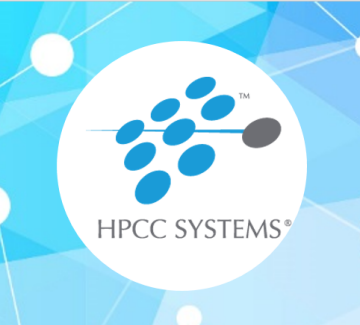
HPCC (High-Performance Computing Cluster) is a big data processing platform developed by LexisNexis Risk Solution. It is implemented on commodity computing clusters which enables data-parallel processing for handling complex tasks and provides high-performance applications for applications utilizing big data. HPCC is also known as DAS (DataAnalytics Supercomputer)
Features of HPCC
- HPCC manages big data tasks with far less code making it one of the highly efficient big data tools.
- HPCC provides massive scalability and performance.
- It has a user-friendly Graphical User Interface IDE for simple testing, development, and debugging.
- It offers high redundancy and data availability.
- The code is compiled into optimized C++, and it can also extend using C++ libraries.
3. Storm

Apache Storm is an open-source, distributed real-time big data-processing system. It was developed to process the vast amount of data in a fault-tolerant method ensuring high data availability. It is easy to operate and you can execute all kinds of manipulations on real-time data concurrently. Apache Storm is written in Java and Clojure. Apache Storm is considered one of the most popular big data tools and top companies like Yahoo, Spotify, Alibaba, Twitter, Cerner, Yelp, Groupon, etc use this technology.
Features of Storm
- Storm can process one million 100-byte data per second per node.
- It offers many big data tools that use parallel calculations that run across a cluster of machines.
- Storm is easy to set up, and operate and it guarantees that each unit of data will be processed at least once.
- If a single node fails, it automatically restarts and the work is shifted to another node.
- Storm allows real-time stream processing of data.
4. Cassandra

Apache Cassandra is an open-source, distributed database that provides high scalability and is designed to manage huge amounts of structured data. It has a decentralized storage system that provides high data availability with no single point of failure – it means that the system will continue operating without interruptions even when one or more components fail.
Features of Cassandra
- Cassandra provides flexibility to distribute data by duplicating data across multiple data centers.
- It has no single point of failure and thus data is continuously available for business-critical applications that cannot afford a failure.
- Cassandra is linearly scalable, i.e., it increases your rate of processing as you increase the number of nodes in the cluster. Thus. maintaining a quick response time.
- Cassandra offers help agreements. Benefits are also available from third parties websites.
5. Qubole
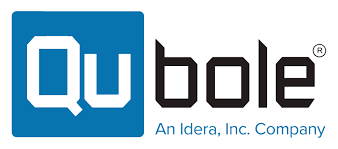
Qubole is an open-source autonomous Big data management platform It automates the installation, configuration, maintenance of clusters, and built-in tools for data exploration and analysis. It is self-maintained, self-optimizing, and lets the data team focus on business by automating the installation, configuration, and maintenance of clusters, multiple open-source engines, and purpose-built tools for data exploration, ad-hoc analytics, streaming analytics, and machine learning.
Features of Qubole
- Qubole provides a single platform for all big data development use cases.
- Qubole offers actionable alerts, insights, and guidance to optimize the trust, performance, and expenditures of the tool.
- It provides high security and compliance of data.
- It is an Open-source big data software and has engines optimized for the Cloud
6. Flink

Another Apache open-source technology, Flink is a stream processing framework and is one of the most efficient data analytics tools. It is a distributed, high-performing, and always-available data streaming application. Flink is designed to run in all common cluster environments and provides a set of libraries for machine learning.
Features of Flink
- Flink provides accurate results for all types of data It is fault-tolerant and can recover from failures
- Flink provides adequate throughput (rate of processing) and response time
- Flink can perform at a large scale, running on thousands of nodes and processing terabytes of data.
- Flink supports stream processing.
7. CouchDB

CouchDB is an open-source NoSQL database developed by Apache. It stores data in JSON-based documents that can be accessed in the web browser. NoSQL databases are non-relational and do not have a fixed schema. This makes it easy to scale and handle a large amount of data. Thus making it easier to perform data analytics.
Features of CouchDB
- CouchDB provides distributed scaling with fault-tolerant storage
- It makes use of the universal HTTP protocol and JSON format
- Replication of a database across multiple servers is one of the simplest and it is simple to replicate.
- It can duplicate devices like smartphones that have the functionality to go offline and handle data sync for you when the device is back online.
8. StatWing
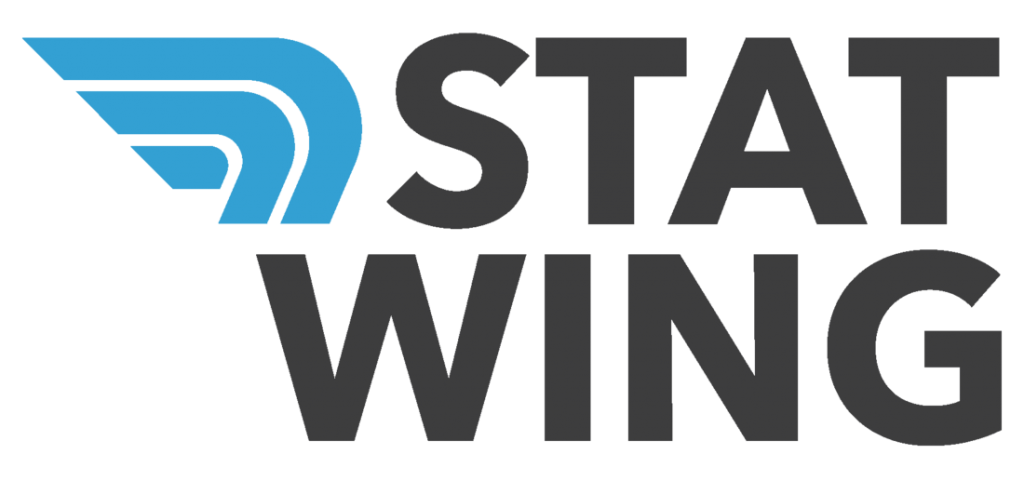
StatWing is statistical analysis software and is considered one of the leaders in the statistical analysis market. It was designed by and for big data analysts in the year 2012. The graphical user interface of statwing chooses statistical tests automatically. It includes features such as analytics, forecasting, multivariate analysis, regression analysis, time series, visualization, file storage, association discovery, compliance tracking, and statistical simulation.
Features of StatWing
- Statwing collects and analyzes data very efficiently and with high speed.
- Statwing helps to clean data, analyze relationships, and create graphs
- It provides the functionality to create histograms, scatterplots, heatmaps, and data bar charts that can be exported to Excel or PowerPoint.
- Statwing provides training via documentation and live training sessions.
9. Xplenty

Xplenty is a platform that allows users to integrate, process, and prepare data for analytics on the cloud. It helps you with implementing ETL (Extract Transform Load), ELT, or a replication solution. Xplenty provides simple visualized data pipelines across a wide range of sources and destinations. It provides solutions for marketing, sales, support, and developers.
Features of Xplenty
- Xplenty transfers and transforms data across internal databases or data warehouses
- It is a scalable cloud platform.
- Xplenty lets users perform complex data preparation functions by using its rich expression language.
- It provides an API component for advanced customization.
10. Cloudera

Cloudera is a cloud platform that uses analytics and machine learning to yield insights from data. It allows you to fetch, process, manage, discover, model, and distribute unlimited data. It is one of the fastest, and easy-to-use modern big data platforms.
Features of Cloudera
- Cloudera provides high security and governance
- It implements a pay-per-use model.
- The enterprise version can be deployed across various cloud platforms such as Amazon Web Services, Microsoft Azure, and Google Cloud Platform
- It is easy to use and understand
11. Hive

Apache Hive is a SQL-based data warehousing tool used for extracting meaningful information from data. Data warehousing is storing all kinds of data generated from different sources at the same location. Hive is a fast, scalable big data tool and can query Petabytes(PB) of data very efficiently.
Features of Hive
- Hive uses HIVE query language to query structured data which is quite easy to code and understand.
- Hive lets multiple users query the data simultaneously.
- Hive provides support for ETL(.Extract Transform and Load) – ETL is a data integration process that combines data from multiple data sources into a single, consistent data store that is loaded into a data warehouse or other target system.
- Hive data is stored in HDFS and so fault tolerance is provided by Hadoop
- Hive supports many file formats such as Parquet, textFile, RCFile, ORC, SequenceFile, LZO Compression, and more.
12. Rapidminer
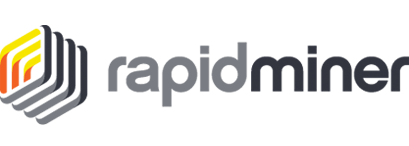
Rapidminer is an open-source, cross-platform tool that offers an integrated environment for data analytics and machine learning. RapidMiner is used in Data preparation, forming machine learning models, and model deployment. RapidMiner is being used by organizations such as Hitachi, BMW, Samsung, Airbus, etc.
Features of RapidMiner
- RapidMiner is used to perform predictive analytics (makes predictions about the future outcome using statistics and modelling) of data.
- RapidMiner combines easily with already existing databases
- Integrates well with APIs and the cloud.
- RapidMiner provides great customer service and technical support.
13. OpenRefine
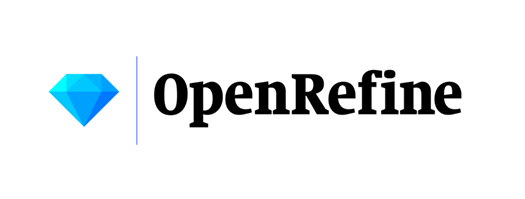
OpenRefine is an open-source big data tool for working with unstructured data. It enables users to clean the messy data and convert it to different formats. It is a powerful tool and can manipulate huge chunks of data at once. It looks like a spreadsheet but operates like a database permitting enhanced capabilities beyond programs like Microsoft Excel.
Features of OpenRefine
- It performs data normalization (organizing data in a database.)
- It supports many data formats like XLS, CSV, JSON, and XML as input and output
- It lets users link and enhances their dataset with different web services
- It provides advanced filtering and transposing techniques
14. Tableau

Tableau is regarded as one of the best Business Intelligence (the process by which organizations use strategies and technologies for analyzing current and historical data, for improving decision-making) and data visualization tools. It makes the task of organizing, managing, visualizing, and understanding data quite easy for users.
Features of Tableau
- Tableau Dashboards offers a great view of your data by means of visualizations, visual objects, text, etc
- Tableau provides functionalities that enable users to collaborate and share data in the form of visualizations, sheets, dashboards, etc.
- It has a superb security system that is based on authentication and permission systems for user access and data connections
- It has advanced visualization features such as heatmaps, motion charts, histograms, etc
15. MongoDB

MongoDB is a scalable NoSQL document database platform developed to overcome the relational databases approach. Document databases deal with documents rather than strictly defined tables which enables combining data from documents and getting them into an organized form. It is written in C, C++, and JavaScript. MongoDB helps in quick querying and retrieval of big chunks of data. This fast process helps in the computational challenge of big data analytics.
Features of MongoDB
- MongoDB allows users to search by field, and range query and also supports regular expression searches.
- MongoDB can run over multiple servers allowing data replication and thus maintaining its running condition in case of hardware failure.
- It has an automatic load balancing (distribution of database workloads across multiple servers) configuration because of data placed in multiple servers.
- It is a schema-less database written in C++ and uses javascript instead of procedures.
17. Datawrapper
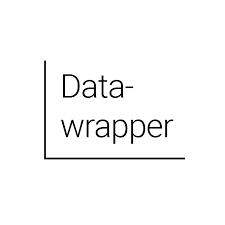
Datawrapper is a data compilation and visualization software that enables its users to generate simple, precise, and embeddable charts very quickly. It is open-source and free to use. Datawrapper is mainly used by journalists, software developers, and other design professionals.
Features of Datawrapper
- It is compatible with all types of devices – mobile, tablet, or desktop
- It is very user-friendly and interactive
- It requires zero coding
- It offers great customization and export options.
Conclusion
We saw some of the most in-demand big data technologies that are floating in the market. The Big Data technologies discussed here can help any company to increase its profits, understand its customers better and develop quality solutions. Deciding which big data tool works best for a project depends largely on the project’s requirements. So, one needs to choose the right Big Data tool wisely as per your project needs. In the era of data, the knowledge of big data tools holds high value for any employee or learner wanting to enter the big data domain.
FAQs
Q.1: Which is the best tool for big data?
Ans: The choice of a big data tool depends on the use case of the user. But overall, Apache Storm and Apache Hadoop can be considered the best big data tools
Q.2: Which type of company uses Big Data?
Ans: Big data is being used by companies in every sector, such as banking and finance, healthcare, education, Communications, Media and Entertainment, and the list goes on. Some of the top companies using big data are Google, Amazon, Apple, Facebook, and Netflix.
Q.3: Is Big Data Dead?
Ans: No, Big data isn’t dead. It’s only going to become more prominent. With the huge consumption of data in everyday life – the analytics drawn from it will only nurture and provide a direction to the industry.
Q.4: Who benefits from big data?
Ans: The business benefits from big data by making strategically better decisions, increasing productivity, and reducing costs. Organizations in turn can provide a better customer experience to their users. Organizations can also increase their revenue and enhance their products through big data.


